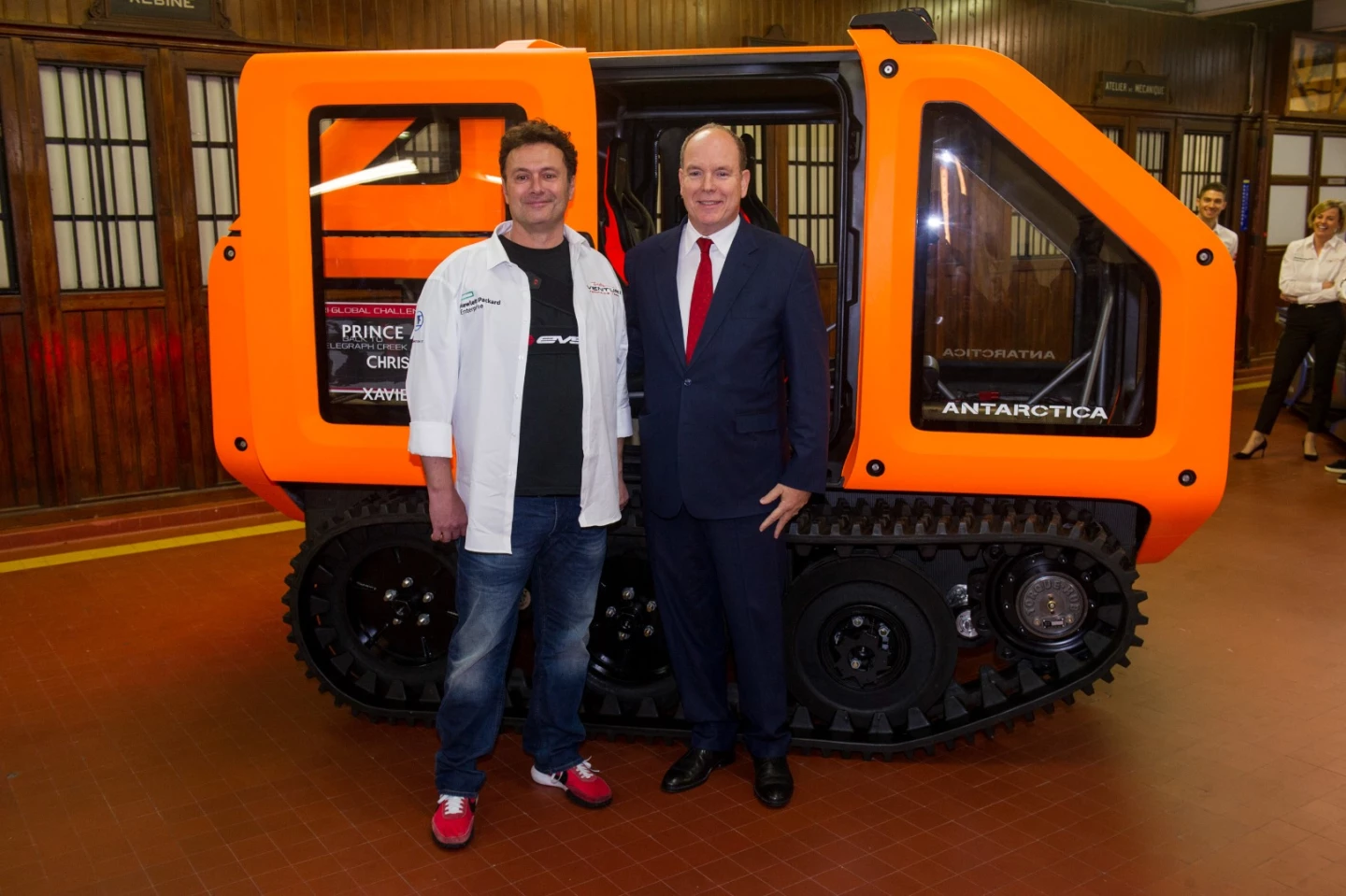Monaco's Venturi Automobiles has made a name for itself blazing electric-vehicle trails over hot salt, hot race track and hot sand, but it's about to crank down the temperature. The company has revealed its finalized Antarctica polar exploration vehicle and is preparing to bring it down to the world's loneliest continent. Designed to offer zero-emissions driving in delicate study areas, this orange beast crunches over ice and snow on battery-powered treads.
Venturi revealed the finalized version of the Antarctica at the Prince's Palace in late November, and after a March 2019 test run in Canada, it will send the specialized vehicle to its namesake to support the work of scientists. Venturi says it's capable of withstanding temperatures down to -50° C (-58° F).
The Antarctica project was initiated by Prince Albert II of Monaco through his foundation after a 2009 trip to the continent. It represents another in Venturi's series of global challenges putting electric vehicles to the test in extreme environments.

Along with Venturi's well-publicized electric land speed records, previous challenges have seen a fully electrified Citroën Berlingo make a 3,725-mile (6,000-km), six-country unassisted voyage across a sparsely gridded section of Southern Africa and that same van go for an all-out distance run, connecting Shanghai and Paris with a massive 9,250-mile (14,900-km) journey.
A converted Berlingo served well in the past, but the Antarctica mission has required some ground-up thinking, resulting in something unlike any other vehicle out there. The last time we looked in on the project in 2015, Venturi was testing out a rather rough open-top prototype in the Southern Alps. Since that time, it has developed a more advanced, finished version, bringing the latest battery technology over from its racing program to improve efficiency.

The 4,400-lb (2,000-kg) Antarctica's wheel-mounted caterpillar tracks are powered by a dual 80-hp motor system. The vessel can carry three people, along with luggage and equipment. It offers up to 28 miles (45 km) of range and can travel at speeds up to around 12.5 mph (20 km/h).
Those performance specs won't exactly send Antarctic crews zipping across the continent, but the extreme-weather machine will prove faster than the ski or foot travel scientists traditionally rely upon when accessing sensitive study areas that can't be exposed to pollution from combustion engines.
"Until now, researchers had to get around on foot in some areas, in order to avoid polluting them," explains Gildo Pastor, president of Venturi. "Now, with the Venturi Antarctica, they will have access to an efficient, very maneuverable vehicle with excellent traction. Scientists will be able to carry out their research under optimum conditions, without polluting these sites where analysis requires molecular precision."
Before sending its electric contraption to Antarctica, the Venturi team will test it under real-world conditions in Canada. Billed "Back to Telegraph Creek," the test mission will pay tribute to the 1934 Croisière Blanche, one of four Citroën rallies held during the early twentieth century.
Prince Albert, Venturi North America president Xavier Chevrin and Canadian astronaut Chris Hadfield will pilot the Antarctica over 26 miles (42 km) of rugged terrain in northwestern British Columbia. Venturi explains that the route between Dease Lake and Telegraph Creek was the final leg of the 1934 rally, never completed due to the harshness of the landscape and weather.
While the Antarctica was designed primarily as a zero-emissions support vehicle for polar scientists, Venturi may build additional variants in the future. "Venturi Automobiles is not ruling out the possibility of creating new versions of its vehicles for entirely novel uses," the company teases.
Source: Venturi Automobiles






